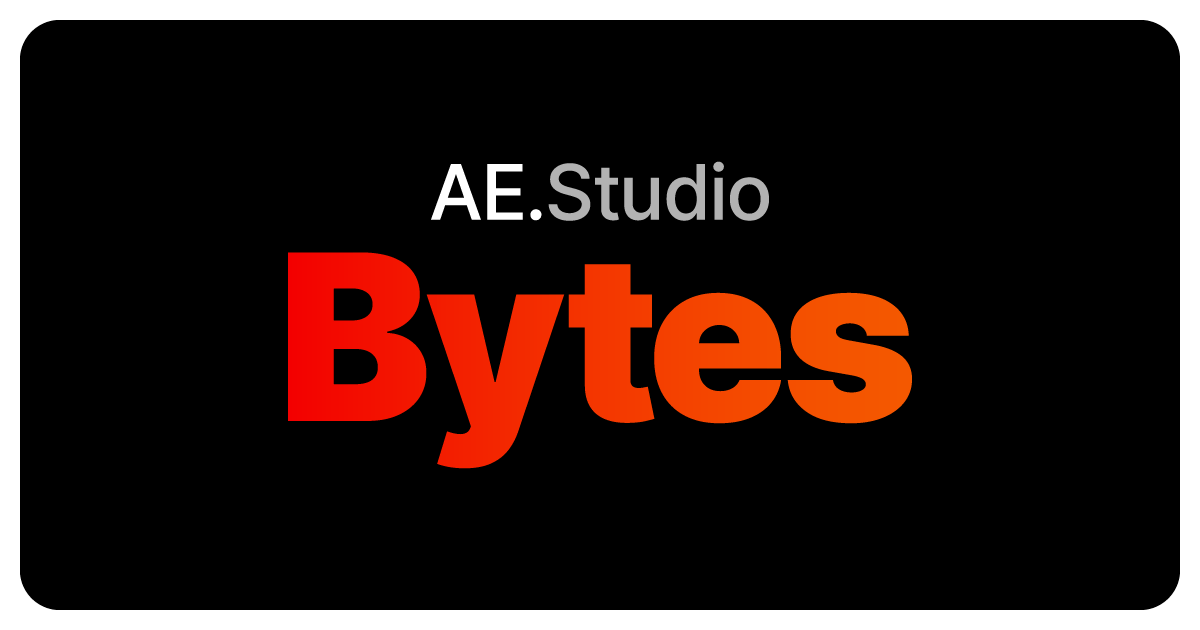- AE Studio Bytes
- Posts
- The secret behind a UX that keeps customers coming back
The secret behind a UX that keeps customers coming back
Most users abandon apps after one bad experience — here's how we prevent that


88% of users are less likely to return to your app if they have a bad user experience.
Nope, that’s not a typo — a single frustrating moment with a janky interface or buggy interaction can cost you a customer forever.
Even so, it’s common for development teams in every industry to let critical UX issues slip through the cracks when launching a new feature.
They ship because everything looks good in the initial demo... but as soon as users try it, they hit errors, get confused, and eventually give up.
Which begs the question:
If the downsides are so huge... why do so many product managers let this happen?
The simple answer is:
They never experience their own software the way their customers do.
That’s why our dev teams follow a core discipline of “testing like a user.”
Instead of testing like a developer (just making sure everything technically “works”), we test like the actual people who will use the product.
Because what users really want is a UX that feels invisible, and functions so flawlessly that they never have to think about it.
That’s easier said than done, of course.
So to achieve this, we religiously adhere to a few key product management principles.
(Feel free to steal these for your own development processes!)
👉 We eat our own dog food
Not literally, thank goodness 😅
We do automated tests to catch bugs, but there’s no substitute for experiencing the product like a real customer would.
All of our team members, and especially our product managers, do “dogfooding” — frequently and proactively using the app in real-world conditions, to nip functional problems in the bud.
👉 We test for different types of users
Users aren’t a monolith. They interact with apps in different ways.
So we always start by clearly identifying who we’re simulating and what their goals would be.
We outline multiple personas and scenarios, and then walk through each one step-by-step to make sure we’re fulfilling their needs.
For example, if we’re building an e-commerce app, one persona might be “Online Shopper Owen” whose goal is to find and purchase a product as quickly as possible.
Then we’d test the flow of searching for items, adding to cart, and checking out, looking for inefficiencies Owen might run into along the way.
👉 We maintain a beginner’s mindset
Our team deliberately puts aside their insider knowledge and assumptions when testing.
They know that if something isn’t obvious to them, then it definitely won’t be obvious to the customer.
They also note little frustrations that pile up during regular use, like a sluggish interface. Because if it’s even mildly annoying to a dev, the end user will feel it 10x more.
👉 We try to break everything manually
Automated scripts that test for ideal scenarios (where users do every interaction correctly) frequently miss edge-case bugs. To find them, you need humans to wander off the beaten path.
In the real world, users enter unexpected data, or click weird button combinations, or use ancient browsers on slow connections 🤷♂️
So we simulate all of that by hand wherever possible.
Testing like a user is a powerful technique, because it massively improves product quality without necessarily requiring a formal user research lab or a big QA team.
Plus, squashing major bugs before release saves time and money in the long run.
And speaking of which…
If you’re interested in hiring one of our world-class development teams for an upcoming project:
Our next issue of AI Alignment Weekly drops Thursday — see you then! 👋
